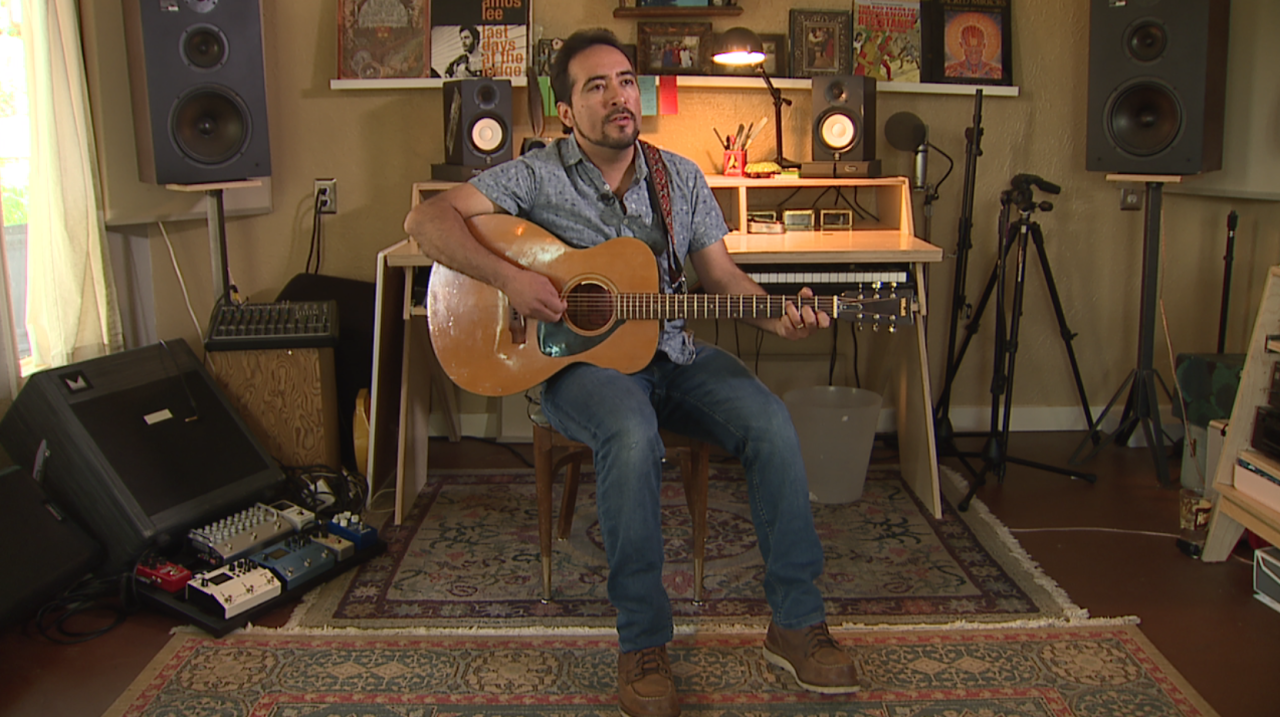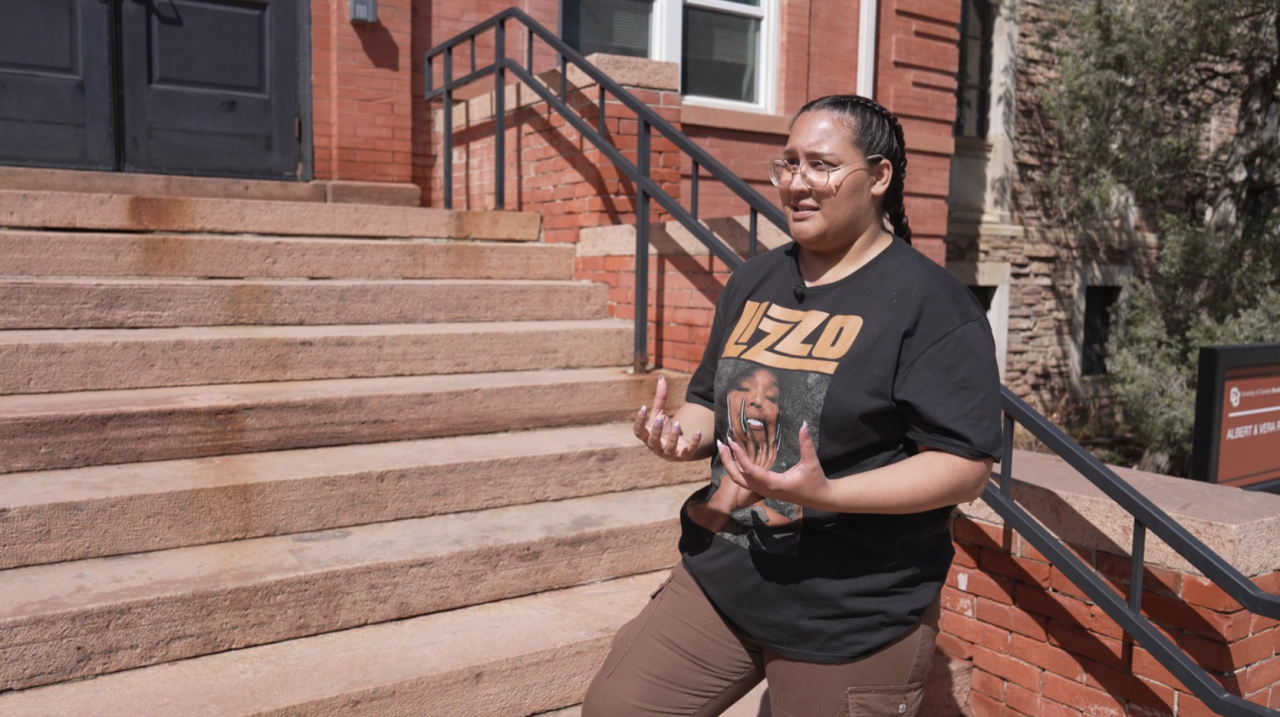DENVER, BOULDER and LONGMONT, Colo. — In late spring 1974, a car exploded in Boulder. Another soon followed. Six young people were killed; a seventh was seriously injured. They came to be known as Los Seis de Boulder, The Boulder Six.
It's been 49 years since the deaths of those activists in Colorado's Chicano movement, but their legacy lives on.
In a three-part special report, Denver7 spoke with family members, historians, archivists and University of Colorado Boulder students. They explain how Coloradans are preserving the history of Los Seis, and retelling the story today to honor the lives lost and keep the fight for equity alive.
Part 1:
Car bombs killed Chicano activists in Boulder nearly 50 years ago, but their legacy lives on
Nestled at the foot of the Flatirons, tucked between cottages and hiking trails, Boulder's Chautauqua Park is known for its beauty. But that picturesque place was also the scene of an explosion that killed six Chicano activitists and left a community in turmoil.
Almost 50 years ago, a car exploded in Chautauqua in Boulder, taking the lives of aspiring teacher Neva Romero, lawyer Reyes Martinez and University of Colorado Boulder graduate Una Jaakola.
Less than 48 hours later, a second car bomb killed poet Heriberto Teran, activist Florencio “Freddy” Granado and aspiring doctor Francisco Dougherty. Another man, Antonio Alcantar, survived but was seriously injured.
The six who died became known as Los Seis de Boulder, The Boulder Six.
The deadly explosions struck fear into Colorado’s Chicano movement. Federal and local law enforcement agencies investigated, but no one was ever charged.
“The mystery and the unsolved nature of it has a draw,” said Michelle Steinwand, the sister of Una Jaakola, one of the car bombing victims. “Why didn't this get the attention it needed? Why wasn't this investigated appropriately? Why wasn't there resolution?”
But for Steinwand and other family, friends, historians, archivists and CU Boulder students, preserving that history and retelling the story today is less about the unanswered questions, and more about keeping the fight for equity alive.
The young people who died were fighting to open the doors to education for Chicanos, people of Mexican descent born in the U.S.

“A lot of people don't know that Colorado was really a hotbed of Chicano activism on par with places like Texas and Los Angeles,” said Nicki Gonzales, Colorado’s first Latina state historian.
But when the car bombs went off in May 1974, the violent deaths had a chilling effect on the movement.
“Many of the activists felt demoralized,” Gonzales said. “It was such a traumatic event and as a Chicano community, we still carry that with us.”
For decades, the story of Los Seis was a painful memory for those close to the victims. But the history was not well known by most Coloradans.
The lives of Los Seis and the state’s other Chicano activists are now on display at Denver’s History Colorado museum, which Gonzales helped put together.
“We have memorialized people who in their pursuit of justice were tenacious,” Gonzales said. “For later generations to look at these panels and to see leaders from their own community is a great inspiration for continued movements for educational access and equity,” she said.
In the 1960s and 1970s, students in Boulder led the movement for educational equity in Colorado’s universities. The student group United Mexican American Students, or UMAS, protested and occupied campus buildings to demand financial aid and higher enrollment of Chicanos.
On the CU Boulder campus today, library archivists like Megan Friedel are working to preserve that history.
Through the historical documents, Friedel hopes that students and others in the community can get a fuller picture of the student activism that was happening before and after the bombings.
For Steinwand, who lost her sister in the bombings, it means a lot that historians, archivists and others in the community are recognizing Los Seis.
"Una and her friends were very committed to higher education for everyone,” Steinwand said. “So many of the efforts that my sister and her friends and colleagues were involved in are the efforts that we still need to be involved with today.”
Part 2:
Families still reeling with loss of Chicano activists killed by car bombs 49 years ago
Two car bombings, less than 48 hours apart almost 50 years ago, are still shaking the lives of Coloradans today.
The first bomb went off in Boulder’s Chautauqua Park, taking the lives of aspiring teacher Neva Romero, lawyer Reyes Martinez and his girlfriend Una Jaakola.
Then a second explosion killed poet Heriberto Teran, activist Florencio “Freddy” Granado and aspiring doctor Francisco Dougherty. Another man, Antonio Alcantar, survived but was seriously injured.
“While I grew up knowing this story, there's a lot of people who have no idea that this happened,” said Antonio Lopez, the nephew of one of the bomb victims, lawyer Reyes Martinez.
Lopez and other family members of those who died continue to mourn their loss, and to share their stories.
Lopez is a folk musician and his songs reflect the Chicano community’s place in Colorado.

“Our history in this area goes back for so long,” Lopez said. But, he said, “a lot of the Chicano history has just been erased and bulldozed over... so inevitably, it's the stuff that seeps into my art.”
Reyes and his brother Francisco “Kiko” Martinez were both lawyers.
“They figured that that could be one of the best ways to help people and just help the cause,” Lopez said.
But Reyes' time as a lawyer was brief.
“They were young people who had a very full life ahead of them with dreams and professional aspirations, and their lives were cut short by tragedy,” Lopez said.
Los Seis ranged in age from 21 to 32 at the time of their deaths. The deadly explosions shattered their burgeoning careers and separated them from their families.
Lopez never had the chance to meet his uncle.
“He was always kind of a mythical figure to me growing up,” Lopez said.
A similar experience to that of Florencio Granado, who was named for his father, but born just a few months after the young man died.
"Since I was a little boy, people came up to me and said, ‘Oh my god, you're Florencio's son. I just love the way he spoke and talked and connected with his people,'" Florencio said.
He credits his mother, Georgiana Archuleta, his uncles and Chicano movement scholars and activists like Ricardo Romero and Priscilla Falcon, for teaching him about his father.
“I just wouldn't know about what he did, and what they stood for,” Granado said.
Florencio Granado once marched 100 miles from Pueblo to Denver to call attention to the struggles of farm workers.
"They cared about the people,” Granado said. “I respect them. I honor them.”
For Granado and Lopez, the fight of their lost ancestors is one that lives on today.
“It's not a Hollywood or Walt Disney story of now they're martyrs and now there's equity,” Lopez said. "It's sad to say a lot of what they fought for, people are facing the exact same thing decades later.”
Part 3:
CU Boulder students look to slain Chicano activists as inspiration for ongoing equity fight
Like Gabby Mejia, a current CU Boulder student getting her degree in Film, a majority of those who died in the bombings were part of a CU Boulder student group known as UMAS – United Mexican American Students.
"I kind of wanted to look for people before me that were dealing with the same things I was dealing with and Los Seis came up,” said Mejia, who recently made a documentary about the car bomb victims as part of her studies at CU Boulder.
“I could still feel the legacy they left of the activism and fighting for what was right,” she said.
Before the bombs went off, UMAS was pressuring the university for financial aid and higher enrollment of Chicanos. The students were occupying Temporary Building One, also known as TB-1.
"They were just fighting for financial aid and space. And they died for it,” Mejia said.
After the bombings, federal and local law enforcement agencies investigated, but no one was ever charged.
The FBI called the victims “very active militants” and claimed, “the occupation of TB-1 and the disagreement between UMAS and the administration was the primary reason for the bomb that exploded,” according to official reports.
“They determined nothing. So, it's still, for me, an open case. And I personally believe these students were victims,” Mejia said.

Today, outside of TB-1, students like Mejia can reflect on what happened with a tangible reminder of the lives lost.
Jasmine Baetz and Celina Jara Tovar were art students at CU Boulder when they built a memorial honoring Los Seis in 2019.
"The real intention was to honor and remember publicly, visibly, Los Seis de Boulder,” Baetz said. “There's such an ahistorical way that you can exist on this campus and cruise through four years, or however many years you're here, without having any sense of what happened here. And that's such a loss for everyone who was here.”
Baetz and Jara Tovar brought together hundreds of people to build the mosaic.
"I believe art can not only share histories that are often ignored, but the way that it brings community and others together to me is a way of healing,” Jara Tovar said.
But that healing was almost cut short when university officials decided the monument would be temporary.
“We had to fight for this to stay here,” Mejia said.
Student protests, as reported by CBS Colorado, led the university to make the art piece permanent.
"For me, it's a reminder to stay strong. It's a reminder that people were here before me, that people were here fighting before me,” Mejia said.
But the story of Los Seis is also a reminder for Mejia that not much has changed.
"It's hard, especially in a predominantly white institution,” she said.
In the 1960s and ‘70s, UMAS’ biggest fight was for parity. The group wanted the number of Chicano students at CU Boulder to proportionately reflect the population of Mexican Americans in Colorado. For example, if 30% of people in the state were Mexican American, UMAS argued that 30% of the students on campus should be Mexican American.
But disparities still exist today. Roughly 35% of students in Colorado public schools were Hispanic during the 2021 to 2022 school year. Whereas only 12% of students enrolled at CU Boulder in 2022 were Latino. And paying for college continues to be a struggle.
“I'm still fighting for financial aid. I'm fighting to be heard and seen," Mejia said. “I am fighting so hard that sometimes I have a target on my back. And I've been scared to come to campus some days because of harassment from other students for standing up for myself.”
But when Mejia walks past the memorial and Temporary Building One, the activism of her ancestors on campus gives her strength.
"It always makes the fight worth it,” she said.
A special thanks to the following institutions for providing archival materials: University of Colorado Boulder Rare and Distinctive Collections, CSU Pueblo Archives and Special Collections, Colorado Historic Newspapers Collection, Denver Public Library Special Collections, Carnegie Library for Local History, History Colorado — Juan Espinosa Collection, The Freedom Archives, Boulder Daily Camera
Photojournalists Jacob Curtis, Drew Smith and Cameron Duckworth contributed to this report.






